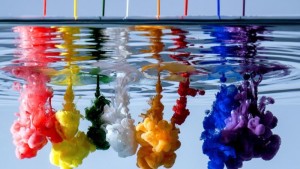
In the technology driven world of today, the colour industry is also evolving. Action is taken to upgrade the work force, machinery, raw materials and processes involved in the industry. The technically sound players in the field work towards providing a wide product range which can take care of the diverse market needs. It is not only about making pigments for paint or solvent dyes with the correct shade but also guaranteeing the safety of the users and the environment.
The solvent dyes are synthetic dyes soluble in organic solvents like Aniline. Some examples of solvent dyes are Solvent Red 24, Solvent Yellow 124 and so on. They possess the excellent property of colour fastness. They offer accurate shades and are known to be cost effective. They have a wide range of application such as in adhesives, automobiles, waxes, hair dyes, inks, lubricants, plastics, imitation jewellery, glass colouring etc. Their special use is in making a wrinkle free cloth in textile industry. The fuel dyes used to colour hydrocarbon fuels are also a type of solvent dyes. They show varying light fastness. The solvent dyes manufacturers work on continuously improving their expertise to enhance the critical parameters of their product by means of research and development.
Paints are all around us, in our homes, our cars, children’s toys, roads etc. Durability, ease of application, desirable shade and opacity are some of the critical qualities required of paints. Pigments in paint have become an integral and an indispensable part of the paint industry. Paints are made by dispersion of coloured pigments in a suitable medium. The paint making process starts with mixing of pigment in the medium which is followed by grinding the pigment particles in a sand mill. This is to ensure better dispersion of the pigment particles. The next step is addition of thinners and finally the tinting. The pigments bestow varied colours and a range of opacity to the paints. Some give texture like a metallic finish to the paint besides protecting the paint from heat and moisture. They have an important role when it comes to developing economical paint options for industrial applications.
A most commonly used pigment is Pigment Blue. Pigment blue 60 is classified as vat pigment Cobalt blue, Cerulean blue, Prussian blue are some of the blue pigments. Reflex blue is widely used in ink manufacturing while Pthalocyanine blue is a bright crystalline blue pigment used in paints. It is superior in terms of tinting strength, light fastness, etc. Blue pigments were originally made from minerals. Egyptian blue was the first artificial pigment created in Egypt. Today however, pigment blue manufacturers make them by chemical process.
The world cannot be an attractive place without the bright colours. Colours make the world appealing, fresh and aesthetic. Achieving perfect colour shades and ensuring that other features meet the international standards ensures that the pigment has a continuous demand in the market. And an manufacturer who has the capacity to offer such a product establishes an enviable position among his competitors.